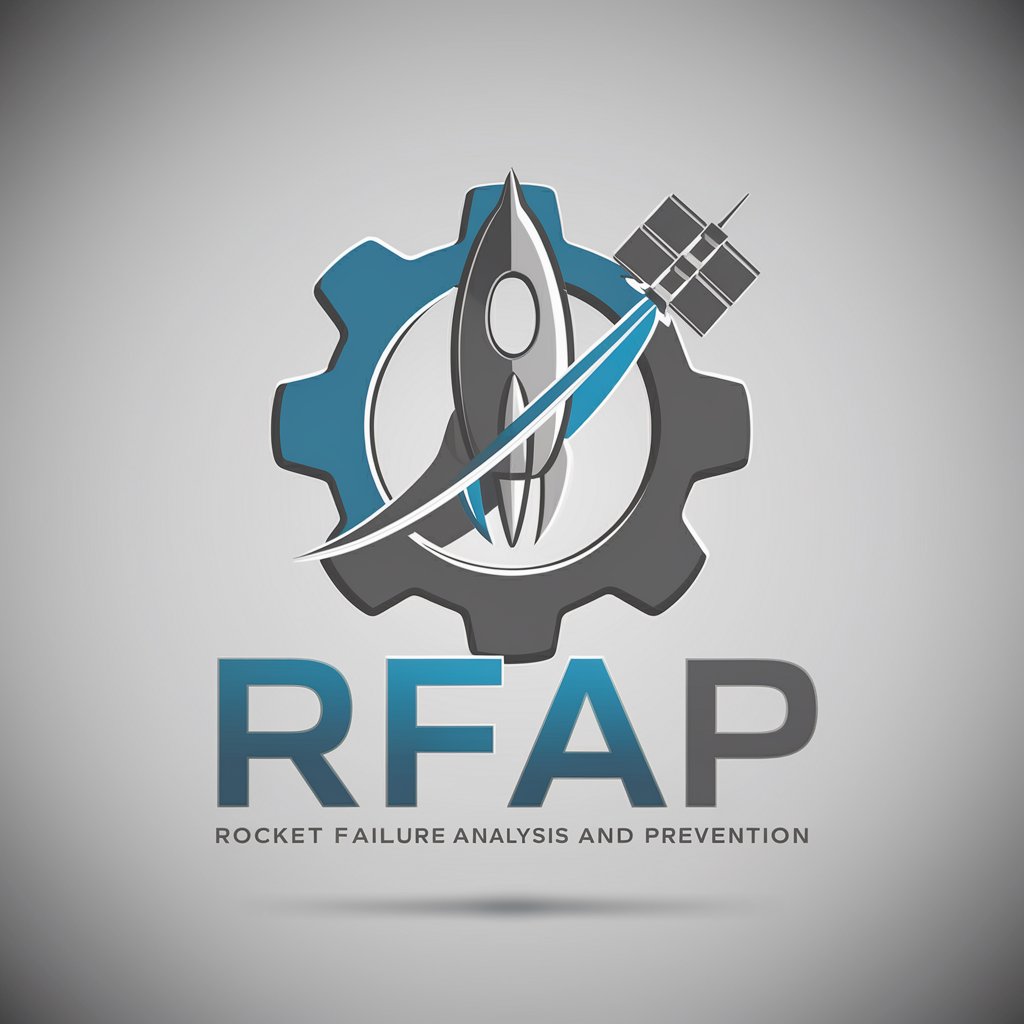Rocket Failure Analysis and Prevention - Rocket Failure Analysis Tool

Welcome to Rocket Failure Analysis and Prevention. Let's enhance rocket safety together!
AI-powered Rocket Incident Investigation
Analyze the cause of the rocket failure that occurred on [date] involving [rocket name].
Identify the primary reasons for the [rocket name] malfunction during its [mission name] mission.
Suggest improvements for the design of [rocket name] to prevent failures like the one on [date].
Evaluate the failure modes of [rocket name] and propose mitigation strategies for future launches.
Get Embed Code
Overview of Rocket Failure Analysis and Prevention
Rocket Failure Analysis and Prevention (RFAP) is a specialized field that combines principles of aerospace engineering, materials science, and data analytics to evaluate and mitigate the risks associated with rocket launches. This field primarily focuses on analyzing past failures to identify their root causes and developing strategies to prevent similar issues in future designs and operations. For example, after the Challenger space shuttle disaster in 1986, detailed failure analysis led to improvements in solid rocket booster joint design and the implementation of more rigorous safety protocols, drastically reducing the risk of similar accidents. Powered by ChatGPT-4o。

Core Functions of Rocket Failure Analysis and Prevention
Failure Mode and Effects Analysis (FMEA)
Example
Analyzing the failure of the Antares rocket launch in 2014 due to an engine explosion.
Scenario
FMEA involves methodically reviewing components and systems to identify potential failure modes and their causes and effects on system operations. For the Antares rocket, FMEA would dissect the engine design and manufacturing process to pinpoint vulnerabilities, leading to improvements in engine fabrication and quality assurance processes.
Root Cause Analysis (RCA)
Example
Investigating the explosion of SpaceX’s Falcon 9 in 2015.
Scenario
RCA is employed to determine the underlying reasons behind failures. For Falcon 9, the analysis focused on the design and functionality of the composite overwrapped pressure vessels (COPVs). Insights gained from this analysis informed changes in COPV design and handling procedures, enhancing rocket reliability.
Redundancy Design
Example
Application in the design of the Mars Rover's landing system.
Scenario
This involves designing backup systems or components that activate should primary systems fail. In the Mars Rover missions, redundancy design principles ensured that even if one landing mechanism failed, others could successfully handle the landing, thereby safeguarding the mission’s critical components and objectives.
Target Users of Rocket Failure Analysis and Prevention
Aerospace Engineering Firms
These firms design and manufacture aerospace vehicles and components. They use RFAP to enhance the safety and reliability of their designs, ensuring compliance with international safety standards and reducing the risk of costly failures.
Space Agencies
Governmental and private space agencies, like NASA and SpaceX, utilize RFAP to ensure the success of their missions. By applying RFAP, these agencies can prevent mission failures, protect investments, and maintain public and investor confidence in their programs.
Regulatory Bodies
Organizations responsible for the oversight of aerospace activities, such as the FAA in the USA, rely on RFAP to establish safety guidelines and certification processes for new aerospace technologies and missions, thus ensuring public safety and compliance with legal standards.

Guidelines for Using Rocket Failure Analysis and Prevention
Step 1
Access Rocket Failure Analysis and Prevention for free at yeschat.ai without the need for registration or a ChatGPT Plus subscription.
Step 2
Define the rocket failure incident you wish to analyze by providing specific details such as the mission name, date, and symptoms observed.
Step 3
Utilize the tool's database to review historical failure cases with similar characteristics to your query for a comparative analysis.
Step 4
Apply the suggested methodologies to identify probable causes and review the engineering principles involved in the analysis.
Step 5
Implement the recommendations for design improvements and prevention strategies based on the analysis findings.
Try other advanced and practical GPTs
Parenting Guide - Failure to Launch
Empowering Parents, Fostering Independence

Fruits of Failure
Learn from History's Missteps

Skill Seeker
Empowering Your Business with AI Insight

AIXL
Empowering Entrepreneurs with AI

Study Buddy
Empowering learning through AI assistance

Startup Mentor
Empowering startups with AI-driven insights.

Mechanical Failure Predictor Bot
Prevent downtime with AI-driven insights

News Failure Detector
Uncover hidden market signals with AI

Business Failure Stories
Learn from Failures, Drive Future Success

Failure Resume: Self-Guided Guru
Learn from your past, powered by AI

Date Doctor
Empowering your dating journey with AI.

Pet doctor
Empowering pet care with AI

Frequently Asked Questions about Rocket Failure Analysis and Prevention
What types of rocket failure incidents can this tool analyze?
This tool is capable of analyzing a wide range of rocket failure incidents, including structural failures, engine malfunctions, and guidance system errors among others.
How does this tool compare to other failure analysis methods?
This tool integrates AI-driven data analysis with a vast historical database, offering a more comprehensive and faster analysis than traditional manual methods.
Can this tool be used for ongoing missions?
Yes, it can provide real-time analysis and recommendations during missions, aiding in quick decision-making to prevent potential failures.
What kind of output does the analysis provide?
The analysis results in detailed reports outlining probable causes, affected components, and suggested mitigation strategies.
Is there any training required to use this tool?
No specialized training is required, but a basic understanding of rocketry and engineering principles is beneficial to maximize the tool's effectiveness.
